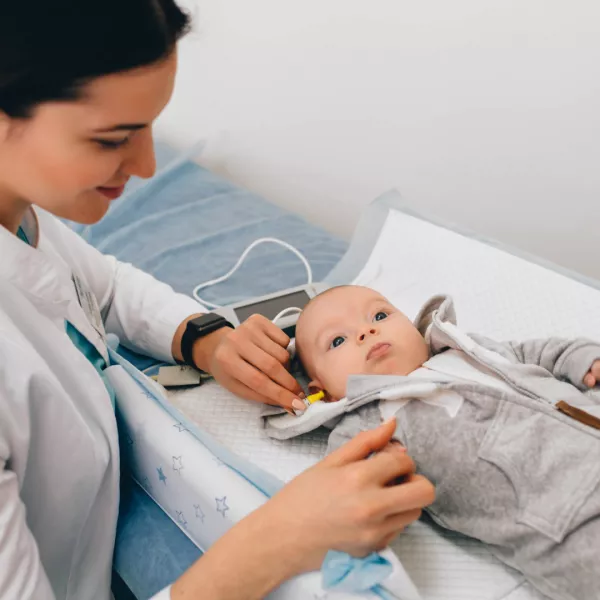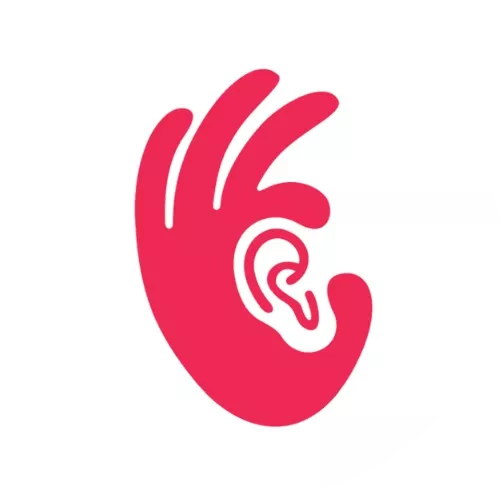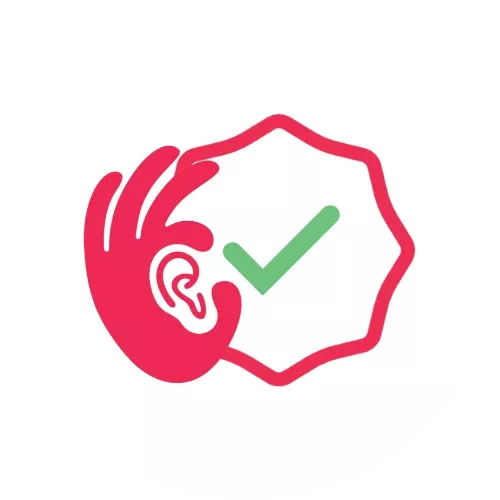TESTING THE NEWBORN
It is important that the child’s hearing loss is diagnosed before 3 months of age. A baby with a hearing loss present at birth should start treatment before the age of 6 months, which is an important time for speech and language development. Children whose hearing loss is identified early and who receive early intervention are found to function at the level of their peers by the time they enter school.
There are two primary screening tests for newborns. Both tests are painless, take only a few minutes, and are best done while the baby is sleeping.
- An Otoacoustic Emission test (OAE), in which a tiny microphone is placed in the baby’s ear. Sounds are transmitted into the ear, and the sounds that are emitted by the cochlea are recorded in the ear canal. Thresholds at certain frequencies can be determined by analysing the emissions. If the baby has a hearing loss there will be no emission of sound.
- An Auditory Brainstem Response (ABR) test, which uses electrodes placed at several locations on the baby’s head and ear. While the baby is resting an acoustic stimulus is presented to each ear either through headphones or insert-earphones. An analysis of the activity in the brain reveals the thresholds of hearing.
- Tympanometry is a test that may help determine how the child’s inner ear is functioning. Air pressure is transmitted into the ear making the ear drum move. The mobility of the eardrum is then measured by a special machine. The test does not determine if the child is hearing or not but can detect changes in the pressure of the inner ear. This test requires the child to sit very still and is mostly used on older children.














